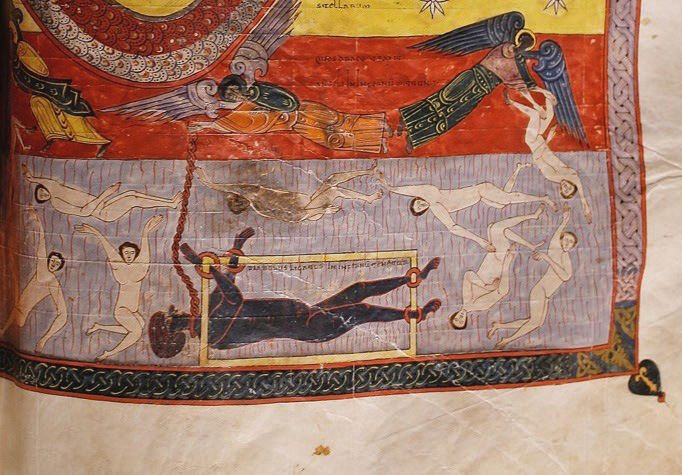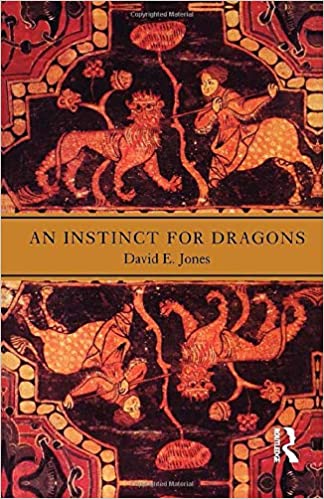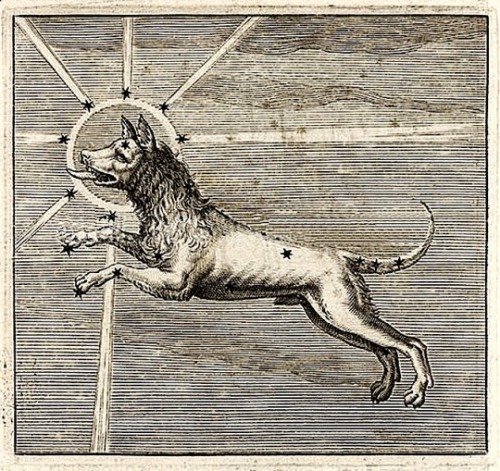
Then I saw an angel coming down from heaven with the key of the abyss and a great chain in his hand. He seized the dragon, that ancient serpent who is Devil and the Satan, and bound him for a thousand years…. When the thousand years are ended, Satan will be let loose from his prison. (Apocalypse 20:1-2, 7)
Satan is bound in prison for 1,000 years. This period of 1,000 years is taken by most early interpreters to mean the entire period of human history from the Crucifixion to the Last Days. Satan is bound in chains by Christ but not totally incapacitated–his minions still tempt and harass the human race. St. John describes each Christian’s victory over Satan, usually by martyrdom, as the “first resurrection;” the “second resurrection” is the General Resurrection of all the dead on Judgement Day.
Satan is loosed at the end of human history not so that he can unleash his anger any more against the human race; he is loosed so that he can be finally and definitively be cast down. Many early preachers used the image of a chicken or a snake beheaded to describe Satan: slain by Christ on the Cross, yet still able to make a mess and scare humans by spewing blood from the fatal wound but seeming to still be alive, running around–“like a chicken with its head cut off!”–or wriggling about.
Satan is often described or painted as having dark or black skin; often, a devil is described as looking like “an Ethiopian” by early Christian monks. Having black skin is not necessarily a dishonor in the Old Testament; the bride in the Song of Songs is “dark and beautiful.” Neither is appearing dark always associated with evil by other cultures: Clare Rothschild points out that “the Nile received its name from the Greek word νεῖλος (‘valley’). Since the river deposits black sediment after it floods, the Egyptians called the river ‘Ar’ (‘black’)…. Black is used of Egyptian gods and goddesses as an honorific: kmwr = ‘Great Black One’ for Osiris and km as epithet used with the name of the god (e.g. Hathor, Apis, Min, Thoth, etc.) or kmt, goddess (e.g. Isis)….” But the “counter-divine” is described as black by Sophocles.
Rothschild suggests that the devils and Satan were associated with Ethiopia because Ethiopia was outside Roman-Byzantine imperial control and was therefore associated with lawlessness. Several church fathers use the illustration that all humans were once Ethiopians (lawless) but have now been brought from lawlessness to righteousness by Christ. Pamela Patton suggests that medieval Spanish interpretations of the Apocalypse–such as the Beatus Apocalypse illumination above–align Satan and Ethiopians as a way to equate Satan with the Moors who invaded the Iberian peninsula and personified the Other, the Enemy.
Rothschild points out many fascinating associations with the color black that might also have influenced the depiction of Satan.


